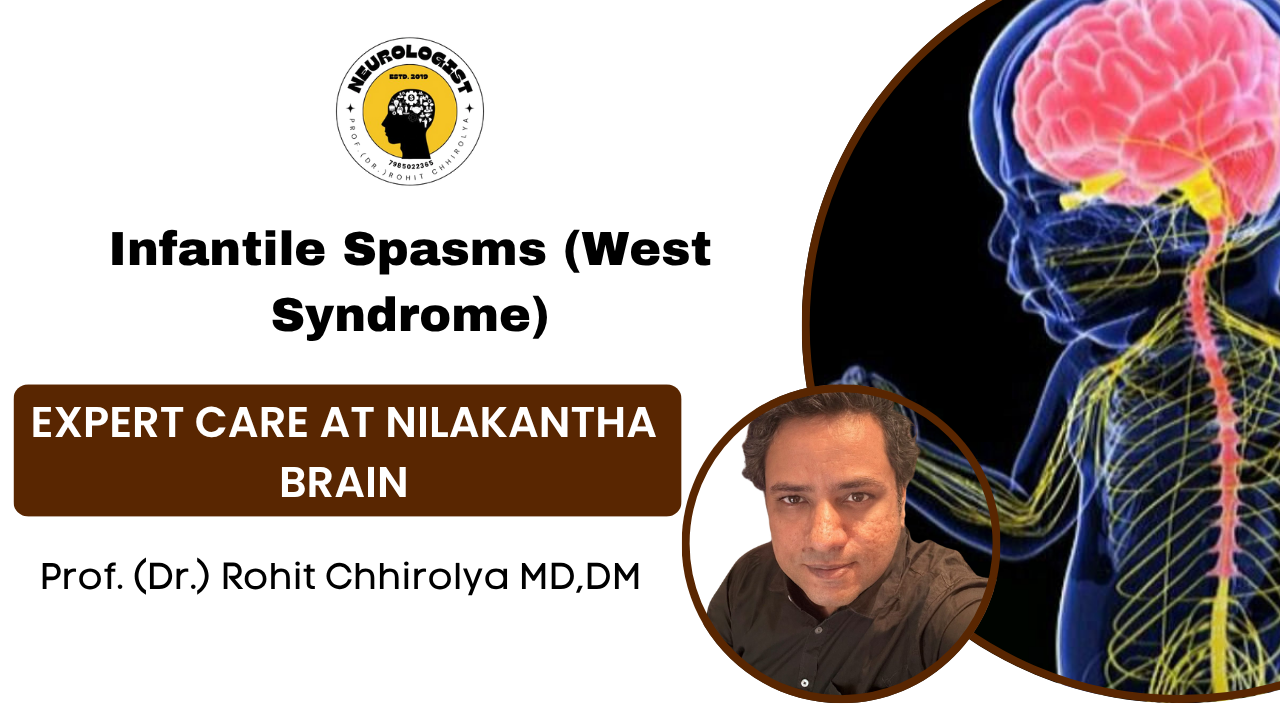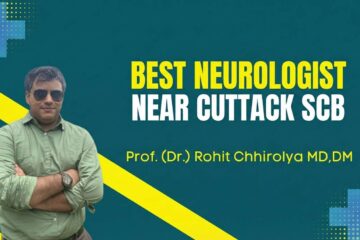Comprehensive Guide to Infantile Spasms (West Syndrome): Expert Care from Cuttack’s Top Neurologist
Table of Contents
- Understanding Infantile Spasms
- Symptoms and Warning Signs
- Causes and Risk Factors
- Diagnostic Process
- Treatment Options
- Why Choose Nilakantha Brain Clinic?
- Finding the Right Neurologist
- Living with Infantile Spasms
- Research and Future Therapies
- Parent Resources and Support
- FAQs
- Success Stories
- Schedule Your Consultation
1. Understanding Infantile Spasms
Infantile spasms, also known as West syndrome, is a rare but severe form of epilepsy affecting infants, characterized by sudden muscle stiffening or jerking. Early diagnosis and treatment by the best neurologist in Cuttack are crucial to prevent long-term developmental delays. If you’re searching for a neuro doctor near me or a trusted neurology doctor in Cuttack, this guide covers infantile spasms, advanced therapies, and why Nilakantha Brain Clinic is a leader in pediatric neurology care. Infantile spasms (IS), represent a severe epileptic encephalopathy affecting 1 in 2,000-4,000 infants. These seizures typically begin between 3-12 months of age and are characterized by:
- Sudden symmetric muscle contractions (flexing or extending)
- Clusters of spasms (5-150 episodes per cluster)
- Peak occurrence during sleep-wake transitions
The condition is diagnosed as West syndrome when accompanied by:
- Hypsarrhythmia (chaotic EEG pattern)
- Developmental regression or delay
Key Statistics:
- 90% of cases begin before 12 months
- 30-50% have identifiable structural brain abnormalities
- Without treatment, 85-90% develop intellectual disabilities
2. Symptoms and Warning Signs
Primary Symptoms:
- Spasm Characteristics: Brief (0.5-2 second) stiffening, often with arms flung outward and legs drawn up
- Cluster Pattern: Occur in series, typically upon waking
- Developmental Impact: Loss of smiling, reduced eye contact, or regression in motor skills
Secondary Indicators:
- Increased irritability
- Sleep disturbances
- Feeding difficulties
3. Causes and Risk Factors
Genetic Causes (30-40% of cases):
- SCN1A, ARX, CDKL5 gene mutations
- Down syndrome (5% of IS cases)
- Tuberous sclerosis complex (10-30% of cases)
Structural Brain Abnormalities:
- Cortical dysplasia
- Hypoxic-ischemic injury
- Stroke or hemorrhage
Metabolic Disorders:
- Pyridoxine dependency
- Biotinidase deficiency
- Mitochondrial disorders
4. Diagnostic Process
Step-by-Step Evaluation:
- Clinical Assessment:
- Detailed seizure description
- Developmental history
- Family neurological history
- EEG Testing:
- Initial routine EEG
- Prolonged video-EEG monitoring
- Characteristic hypsarrhythmia pattern
- Neuroimaging:
- 3T MRI (preferred for high-resolution)
- CT when MRI unavailable
- PET scans for surgical candidates
- Genetic/Metabolic Testing:
- Chromosomal microarray
- Epilepsy gene panels
- Metabolic screening
5. Comprehensive Treatment Options
First-Line Therapies:
- Hormonal Therapy:
- ACTH injections (75 IU/m²/day)
- Oral prednisolone (40-60 mg/day)
- Typical course: 2-4 weeks
- Vigabatrin:
- First-line for tuberous sclerosis
- Dose: 100-150 mg/kg/day
- Requires regular vision monitoring
Second-Line Options:
- Ketogenic diet (3:1 or 4:1 ratio)
- Topiramate or valproate
- Surgical resection for focal lesions
Emerging Treatments:
- Cannabidiol (Epidiolex)
- mTOR inhibitors for TSC
- Gene therapy trials
6. Why Choose Nilakantha Brain Clinic?
Specialized Services:
- Dedicated pediatric epilepsy monitoring unit
- 24/7 EEG availability
- Multidisciplinary team including:
- Pediatric neurologists
- Epileptologists
- Neurosurgeons
- Rehabilitation specialists
Advanced Technology:
- High-resolution 3T MRI
- Video-EEG monitoring suites
- Genetic testing laboratory
7. Finding the Right Neurologist
Essential Qualifications:
- Fellowship training in pediatric epilepsy
- Experience with infantile spasms cases
- Access to comprehensive diagnostic tools
Questions to Ask:
- How many IS cases have you treated?
- What’s your treatment protocol?
- Do you offer genetic counseling?
8. Living with Infantile Spasms
Daily Management:
- Medication tracking apps
- Seizure response training for caregivers
- Home safety modifications
Developmental Support:
- Early intervention programs
- Physical/occupational therapy
- Special education services
9. Research and Future Therapies
Current Clinical Trials:
- Gene therapy approaches
- Novel anti-seizure medications
- Neuroprotective strategies
10. Parent Resources
Support Organizations:
- Infantile Spasms Project
- Child Neurology Foundation
- Tuberous Sclerosis Alliance
Educational Materials:
- Seizure recognition videos
- Treatment guidelines
- Developmental milestone trackers
11. FAQs
Q: Can infantile spasms be outgrown?
A: While spasms may stop, most children require ongoing treatment for other seizure types and developmental support.
Q: What’s the prognosis?
A: With early treatment (within 4 weeks of onset), 40-60% achieve normal development. Delayed treatment reduces this to <10%.
12. Success Stories
Case Study 1:
2-month-old with 50+ daily spasms achieved complete control with ACTH within 3 weeks and normal development at 2-year follow-up.
Case Study 2:
9-month-old with tuberous sclerosis became spasm-free on vigabatrin with significant developmental gains through intensive therapy.
13. Schedule Your Consultation
Early intervention is critical. Contact Nilakantha Brain Clinic today. Don’t wait—early treatment can save your child’s future. Contact the best neurologist in Cuttack:
- Clinic: Nilakantha Brain Clinic
- Phone: 7985022365
Infantile spasms require urgent care from the best neurology specialist in Cuttack. Whether your child needs ACTH therapy, dietary interventions, or developmental support, Nilakantha Brain Clinic provides cutting-edge solutions. Take action now—call 7985022365 or visit their website today!:



